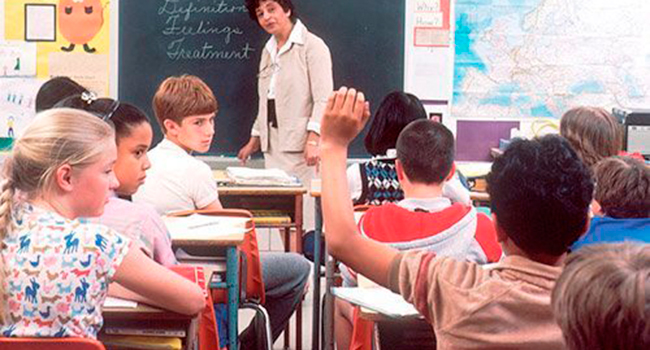By Tegan Hill
and Jason Clemens
The Fraser Institute
Policy-makers in Ontario often mistakenly think more spending on public education automatically means better results. But despite relatively high and increasing levels of spending on public schools, there hasn’t been a commensurate boost in student performance.

Tegan Hill
More spending on public education doesn’t always mean better results. More focus should be placed on how money is spent.
A recent Fraser Institute study found that between 2013-14 and 2017-18 (the latest year of comparable data), spending on public schools in Ontario increased from $26.3 billion to $29.1 billion, an increase of 10.6 per cent. Subsequently, per-student spending in Ontario (adjusted for inflation) reached $14,394 in 2017-18, which exceeds the national average by $596 per student.
But despite the high level of spending and growth in that spending, the province hasn’t seen improved student performance on standardized tests. For example, Ontario’s PISA scores (Program for International Student Assessment), the gold standard of international testing, have either worsened or remained largely unchanged over roughly the same period (2012 to 2018).
In addition, the province’s own standardized testing reveals worrying declines. For example, between 2013-14 and 2017-18, the share of Grade 3 students at or above the acceptable standard in mathematics has decreased from 68 per cent to 61 per cent, and the share of Grade 6 students at or above the acceptable standard has decreased from 56 per cent to 51 per cent.

Jason
Clemens
Thankfully, Ontario can learn some important lessons from other provinces, such as Quebec, where spending per student is 13.6 per cent less than in Ontario – $12,430 versus $14,394 (2017-18). Quebec has the lowest per-student spending of any province.
And yet, according to PISA test results, Quebec students achieve comparable results to students in Ontario.
Of course, many factors contribute to student performance. But it’s important to understand the differences in how the two provinces deliver and finance kindergarten-to-Grade-12 education.
Quebec provides a fairly basic public school system with almost all of the diversity and choice (including religious-based education and alternative programs such as English-language or special-needs education) provided by independent schools. In contrast, Ontario has up to four competing public-school systems, including Catholic education in English and French.
Ontario relies more heavily on the public school system to deliver education than provinces such as Quebec, which rely more heavily on independent schools to achieve comparable results at lower cost.
Ontario policy-makers, who often simply respond to problems by spending more money, would do well to look to Quebec for ways to reform education spending and delivery.
Clearly, more spending does not guarantee better student results.
Tegan Hill and Jason Clemens are analysts at the Fraser Institute.
Tegan and Jason are Troy Media Thought Leaders. Why aren’t you?
For interview requests, click here. You must be a Troy Media Marketplace media subscriber to access our Sourcebook.
The views, opinions and positions expressed by columnists and contributors are the author’s alone. They do not inherently or expressly reflect the views, opinions and/or positions of our publication.


